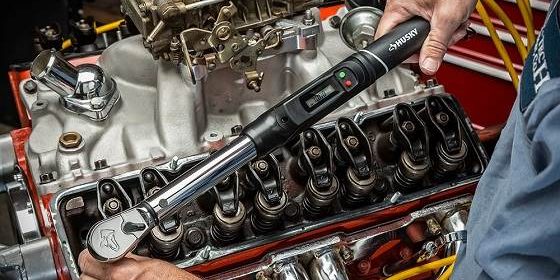The use of torque tools can be found across a large swathe of industrial and manufacturing environments as well as some DIY applications. Given their specific uses, they are tools that, for the most part, you would not normally find in the toolbox of most mechanics and engineers and even the most avid DIYers do not have first-hand knowledge of using torque tools.
That is why whenever the subject of torque and torque tools such as torque wrenches from robotictools.com.au comes up, there are invariably several common questions that get asked. Below are seven of those questions along with the answers which we hope will clarify the queries you may have about torque tools.
What Is Torque?
A great question to start with because if you understand what torque is it makes the application of torque tools and their specific uses much clearer. Torque is the turning force that is required to create rotation. A simple example would be a roulette table in a casino and the fact that each time the croupier spins the wheel they are applying torque to it.
Other examples of where torque is applied to make something rotate includes the drum of a washing machine, the wheels of a car, an electric drill, and the propeller of an aeroplane. Where torque tools are in use, the torque is the amount of circular force applied to a fastener to tighten it.
What Is A Torque Wrench?
Whenever a specific torque needs to be applied to fasteners such as nuts and bolts, a torque wrench with a pre-set torque, is the tool used. Most torque wrenches are akin to socket wrenches although they have more sophisticated internal mechanisms. In most cases, they are used in the same way a standard wrench or socket wrench is used to tighten fasteners, but with a torque wrench, a visual or audible indicator signifies the desired torque has been reached.
How Is The Amount Of Torque To Be Applied Determined?
The specifics of this are almost infinite given the huge array of different engineering, manufacturing, and construction scenarios where the importance of torque is imperative. In most cases, engineering and design experts will use formulas to calculate the required torque for any set of fasteners based on the equipment or machinery they are being used on and which part of them is being fastened or sealed.
How Do I Know That The Correct Torque Has Been Applied?
This can be done in two main ways. First, the torque wrench in use, having been pre-set to the desired torque, will indicate when this has been reached. The indication usually comes from an audible click or is visually indicated on a dial or readout. However, for quality assurance and to ensure no mistakes have been made, a torque testing tool will also be applied to the fasteners in question.
What Are The Risks If The Wrong Torque Is Applied?
The list of worst-case scenario consequences includes disastrous, expensive, and fatal. This is not to scare you, but to strongly emphasise the importance of ensuring the correct torque is used. Bear in mind some of the settings include gas and oil pipelines, wind turbines, and tower cranes which hopefully give a further indication of why nuts and bolts being fastened correctly is critical.
What Torque Tool Should Be Used?
Given that there are several types of torque wrench which include pneumatic, electric, hydraulic, and battery-powered, plus variations within each of them, it is vital to know which contour tools to use. In most cases, experience, job specifications, and industry best practices will identify which torque tool or tools should be used for any given job description.
How Often Should Torque Tools Be Calibrated?
This is influenced by the specific use of the torque wrench. For critical industries, they might be checked and recalibrated every day, or at least once a week, and for less critical scenarios every 6 months or 100,000 uses, whichever is the soonest. Note, for safety reasons any torque tool which is out of calibration must not be used until it has been recalibrated.






